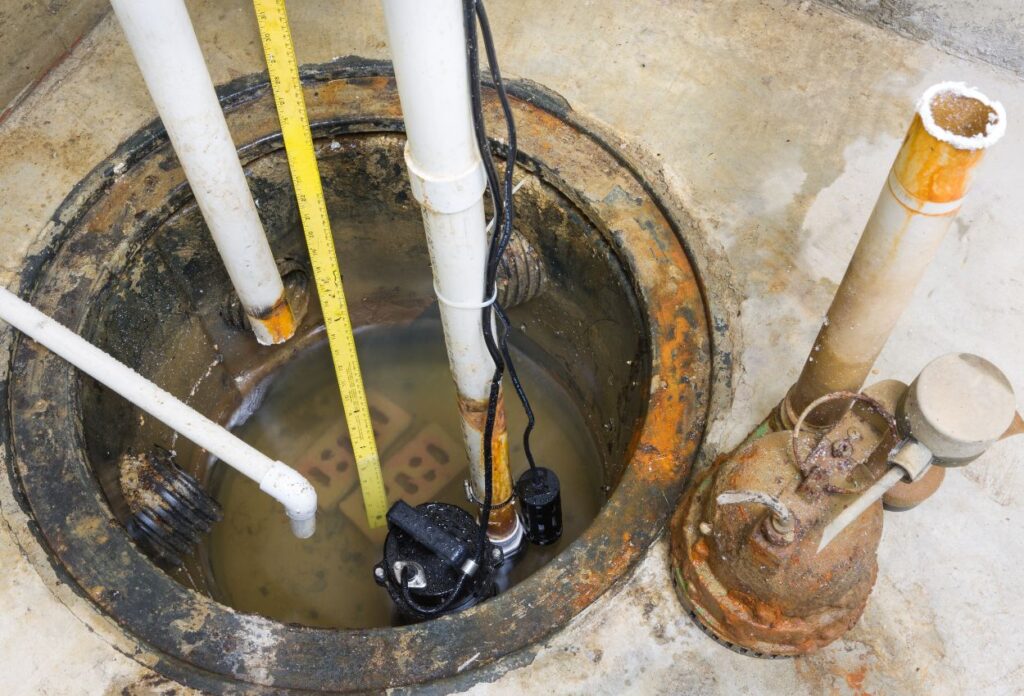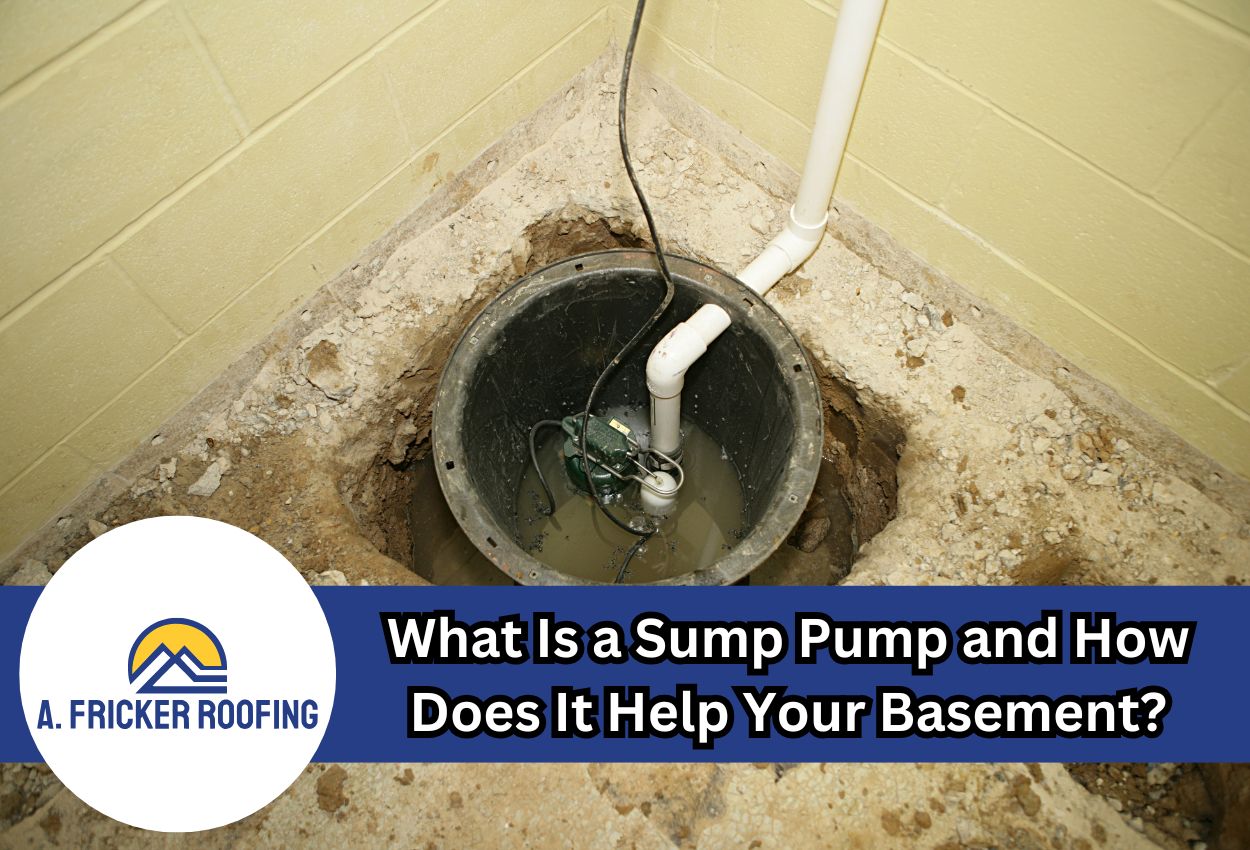Your home is your most valuable investment, and protecting it from water damage should be a top priority. If you have a basement, you may already be familiar with the risks of flooding, dampness, and mold growth. One of the best ways to keep your basement dry and structurally sound is by installing a sump pump. But what exactly is a sump pump, and how does it work?
As a top basement waterproofing company in Oklahoma, we provide reliable and effective solutions for keeping basements dry and protected. Today we’ll explain everything you need to know about sump pumps including how they function and why every homeowner should consider one.
What Is a Sump Pump?

If you have a basement, water problems are likely one of your biggest concerns. This is where a sump pump comes in. A sump pump is a device installed in the lowest part of your basement, sitting in a specially constructed pit (called a sump pit). This pit is designed to collect water that would otherwise seep into your basement, whether from heavy rains or rising groundwater. The sump pit collects water from the surrounding soil or through drainage systems. When the water reaches a certain level, the pump automatically activates to redirect it away from your home’s foundation.
For many homeowners, especially in areas prone to moisture problems, a sump pump is as essential as a water heater, working quietly in the background to protect your home from water damage, flooding, and mold.
Why Do You Need a Sump Pump?
Basements are naturally prone to moisture problems due to their below-ground location. Heavy rains and rising groundwater levels can cause water to seep into the basement, leading to costly damage. Here’s why a sump pump is crucial for your Oklahoma home:
Prevents Basement Flooding:
A sump pump is like your basement’s first line of defense against water damage. By actively removing excess water, a sump pump protects your basement from flooding during storms or plumbing failures.
Protects Your Home’s Foundation and Electrical Systems:
Excess water can weaken the foundation of your house over time, leading to cracks and structural issues. A properly functioning sump pump removes moisture and prevents water from reaching electrical wiring, outlets, and appliances, reducing fire hazards.
Reduces Mold and Mildew Growth:
Moisture and damp conditions create the perfect breeding ground for mold and mildew, which can pose health risks and lead to respiratory issues. Left unchecked, these fungi can spread quickly, damaging your home’s structure and furnishings, and potentially leading to expensive remediation costs.
Improves Indoor Air Quality:
We all know that moisture can lead to humidity. Your basement, being the lowest point of your home, often sees high humidity levels. By keeping moisture levels in check, sump pumps contribute to healthier indoor air and reduce musty odors.
Increases Property Value:
A dry, well-maintained basement enhances your home’s value and appeal to potential buyers, making it an attractive selling point. Buyers are often hesitant about homes with damp basements or a history of water damage, so having a reliable sump pump system in place can significantly improve your home’s marketability and long-term investment.
What Happens If You Don’t Have a Sump Pump?
Many homeowners assume that their basement will remain dry without a sump pump, but the reality is different. Without proper water management, you risk:
- Water damage to flooring, walls, and stored belongings.
- Foundation cracks lead to costly repairs.
- Mold and mildew problems that can impact indoor air quality.
- Higher humidity levels, making the home less comfortable.
- Potential electrical damage and increased fire hazards.
- Reduced home resale value due to water damage history.
How Does A Sump Pump Work?
For a sump pump to work, you first need a sump pit. If you’re installing a sump pump in a new or existing basement, a professional will dig a hole in the lowest part of your basement floor to create the pit. The pit is generally around 2 feet deep and about 18 inches wide.
In this pit, the sump pump is installed. The average size of a sump pump is typically around 12 inches in diameter and about 14 to 16 inches tall. However, the size can vary depending on the type of pump and the needs of your basement. The pit helps collect any water that seeps into your basement. It acts as a low spot where water naturally gathers.
Now that the sump pit is set, here is how a sump pump works:
Groundwater Starts To Collect
Water enters the sump pit through drains or natural groundwater flow. The perforated sump basin, wrapped in landscape fabric and surrounded by gravel, allows water to seep in while keeping debris and sediment out.
The Sump Pump Activates After Water Reaches A Benchmark
When the water reaches a preset level, a float switch or pressure sensor triggers the pump. The float switch mechanism is designed to provide consistent activation heights, preventing premature or delayed pump engagement.
The Sump Pump Starts To Push The Water Out
The pump begins to move water through a discharge pipe away from the basement and foundation, usually to a storm drain, dry well, or a designated drainage area. A check valve installed in the discharge pipe prevents water from flowing back into the basin when the pump stops
Shutoff Mechanism
Once the water level decreases, the pump turns off until it’s needed again. The lower float position ensures enough water remains in the pit to keep the pump ready and prevent dry running.
Types of Sump Pumps
Not all sump pumps are the same, and choosing the right one depends on your home’s needs. Here are the main types of sump pumps:
1. Submersible Sump Pumps
- Installed inside the sump pit and operate underwater.
- Quieter and more efficient than pedestal pumps.
- Ideal for homes with frequent basement water issues.
2. Pedestal Sump Pumps
- The motor is positioned above the sump pit, making it easier to service.
- Typically last longer but are louder than submersible pumps.
- Best for homes with smaller pits or infrequent water accumulation.
Each type of sump pump has different features, and subsequently different price tags. Discussing your needs with a professional can help you choose the right sump pump for your home.
How Much Does Sump Pump Installation Cost?

The cost of sump pump installation depends on factors such as the type of pump, labor costs, and any additional drainage system enhancements. On average, homeowners can expect to pay between $600 and $2,500 for a professional sump pump installation. A basic pedestal pump tends to be more affordable, while submersible models and battery backup systems may cost more. Investing in professional installation ensures that your sump pump is correctly positioned, connected to an effective drainage system, and built to last, giving you peace of mind for years to come.
Trust Our Experts for Installation and Waterproofing Services In Oklahoma
A sump pump is just one component of a comprehensive basement waterproofing system. At A. Fricker Roofing and Waterproofing, we specialize in protecting homes with top-quality sump pump installations, waterproofing solutions, and expert roofing services. Our team ensures your basement remains dry, safe, and structurally sound for years to come. Contact us today at (918) 402-7167 to learn more.
FAQ
A: You should consider a sump pump if you have:
- Frequent basement dampness
- Live in an area with heavy rainfall
- History of basement flooding

